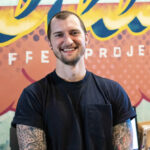If there is anyone that is qualified to write on the subject of disability in the church, it is Sandra Peoples. Having grown up alongside a sister who has Down syndrome, and being raised in an inclusive church, Sandra has experienced the challenges and the blessings of disability firsthand. And in her adult life, she has been entrusted with a son who was diagnosed autistic as a child. Not only does Sandra write with an academic foundation, but also with deep personal desire to see all churches well equipped to serve disabled individuals and their families. Think of this book as your translator for disability ministry.
Before getting into the content itself, it is important to note how Peoples understands “disability.” In her work, she mentions the array of disabilities—physical, cognitive, mental, etcetera— (29–30) but bases the entirety of her work on a specific demographic within disability: children who are diagnosed with, or who may have, “special-needs,” such as Down syndrome, cerebral palsy, vision impairment, etcetera (31). This focus allows her to draw from her personal experience as well as framing disability ministry as a “whole-family ministry,” which is a primary purpose of her work (124).
The subtitle of Peoples’ work presents it as a vision, although it reads more as a “how-to” manual: a majority of the book is programmatic in nature, giving the reader step-by-step instructions on how to build out a disability ministry within their church. Peoples highlights the role of practitioner over that of the theologian (9), which limits the intersection of theology and disability to a one-chapter introduction, leaving much to be desired in terms of theological depth. However, for the purpose of serving the family and removing barriers for the Gospel, this book is glowingly recommended.
Throughout her book, Peoples centers her message on a core problem: Families with disabled children are frequently disadvantaged to hear and experience the Gospel in their local church. This problem is addressed in two of her primary responses: “The goal [of disability ministry] is the Gospel” (5–6) and “Disability ministry is truly whole-family ministry” (124). Because disabled children require such profound care, many times the parents, and even their other children, are deprived of care and community, highlighting the need for disability ministry within all churches. Throughout the examples and systems that Peoples includes in her book, the central theme she presents is creating an accessible church for the purpose of sharing and being the Gospel with and to all who enter our doors. And the way she seeks to accomplish this is through presenting practical steps and methods toward a disability ministry model that can be easily implemented within any church.
For what this book sets out to accomplish, it should be considered a success: a church without any experience with disability can utilize this book as a manual for implementing a ministry designated for families of children with “special needs” (31). As practical and beneficial as this work is, an addendum must be made, and I believe Peoples would agree: Her particular disability experience does not entirely capture the ways in which disability affects the church, and as a church, we must hold our understanding of disability with an open hand. Rather than clinging to the model outlined in this work, our ministries must be malleable to the unique disabilities that affect all seasons of life, from the teenager who is wheelchair-bound to the middle-aged single adult who was recently diagnosed with level I autism. Drawing from my personal experience with autism in the church, much of what Peoples has proposed is a wonderful start in educating the church on the unique challenges of disability—both within the family and the individual—and I found great comfort in the methodology she is proposing.
Perhaps it is presumptuous of me to say this, but there is one thing Peoples and I would certainly agree on: No matter someone’s disability, they can (and should) be a participant in the work of the church, in the same way as those without any disability. Peoples shares an encouraging story of an individual named Max who has special needs, and served his church by vacuuming, which was one of his special interests (139-140). In addition, he loved to dance during worship, and knowing this, the church provided him a particular platform for him to dance without hindrance. It is in these examples that we see Max serving the church and the church serving Max, as it should be for every member of the body. If we believe that all persons can equally possess an image-bearing nature (10), then all persons have an equal contribution and responsibility to the church, and it is a blessing to worship and serve alongside our disabled brothers and sisters.




No comments have been added.